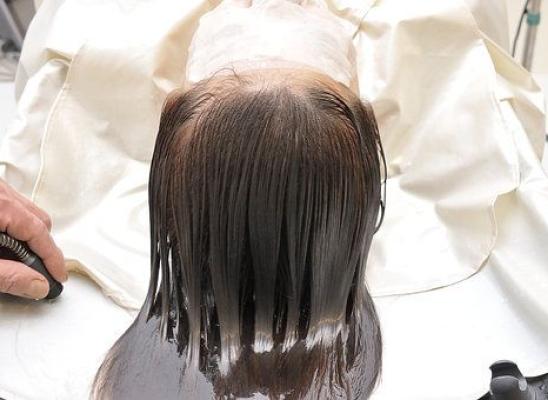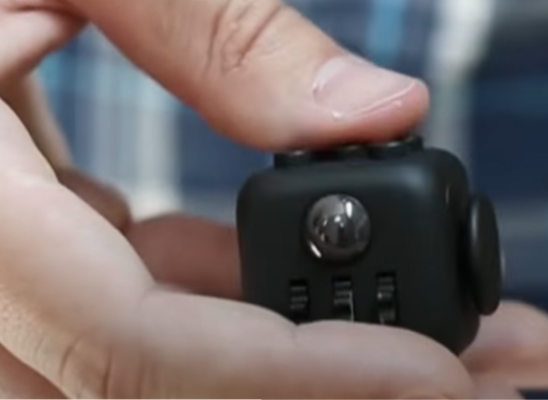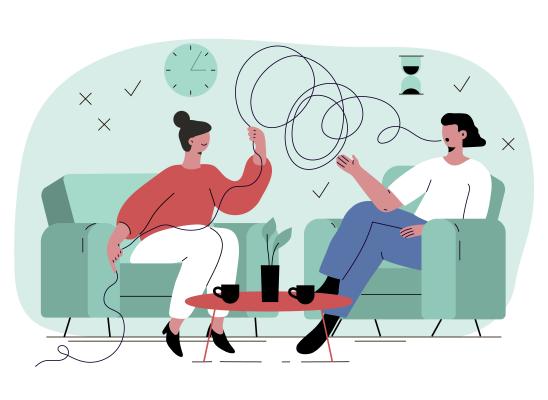Habit Reversal Training and BFRBs: What Research Has To Say

Online test
Find out the severity of your symptoms with this free online test
BFRBs are not a single disorder but a group of disorders characterized by repetitive behaviors that cause injury to the body. BRFBs include trichotillomania (hair pulling), excoriation (skin picking), onychophagia (nail biting), morsicatio buccarum (cheek biting), and others. While each of these disorders is different in its focus on the body, they do share common trajectories. BFRBs result in varying degrees of physical injury to the body and can markedly impair emotional and social functioning. BFRBs are relatively common and not everyone will have significant problems. However, for those that do, finding treatment that can reduce symptoms and improve their quality of life is a priority and sustained effort.
Treatments for BFRBs have primarily focused on behavioral therapies and medications with varying degrees of success. There is currently no curative treatment and symptoms tend to fluctuate over time. The gold standard of treatment for BFRBs is Habit Reversal Training (HRT). While many people get some relief following HRT, relapse after HRT is common and bothersome. New research is taking a second look at HRT and other treatment options. Studies suggest that rather than a single treatment approach, people with BFRBs may benefit from a hybrid treatment approach utilizing the best in therapeutic and pharmacological options.
The Case for Habit Reversal Training
Of the behavioral therapies, Habit Reversal Training has perhaps been studied the most extensively. There is ample support in the literature and anecdotally for its effectiveness in treating BFRBs.
HRT works on the principle of competing responses. In its simplest terms, competing responses mean that a person can’t do two opposing things at the same time. HRT consists of a set of key treatment components, each focused on one aspect of the behavior, with the goal of facilitating behavior change. In this case of a BFRB, the goal is a reduction or cessation of the injurious behavior.
- Awareness Training consists of techniques to help a person learn to recognize triggers and circumstances in which picking or pulling are most likely to happen. As awareness improves, the person can use techniques to discourage the behavior.
- Competing Response Training is the process of teaching the person to substitute another behavior for the picking or pulling that not compatible with their BFRB behavior.
- Finally, social support and behavioral reward systems are used to strengthen behavior change and treatment compliance. Social support training involves identifying and engaging supportive people who can help to prompt the person to use their competing response or give praise when the person is able to use their newfound skills.
HRT is relatively easy to learn and has shown efficacy in the short-term. It has strong awareness, behavior blocking, and reinforcement components. However, HRT does not address the emotional and cognitive difficulties that usually occur with BFRBs. Achieving long-term improvement has been more problematic and relapse is common with BFRB. This fact has led researchers to look at other options and ask the question, is there something that might bridge that short-term gap found with HRT? The answer seems to be, maybe.
Enhancing HRT
It is well established that behavioral interventions are the most effective treatment for BFRBs. Of those, HRT is the most widely used and effective at least in the short-term. However, HRT doesn’t work for everyone and, provides only short-term relief for many. BFRBs are highly heterogenous and affect people differently. There is no one-size-fits-all.
When traditional HRT is not enough, therapists are looking to other behavioral therapies to enhance or complement HRT and the research is promising.
Comprehensive Behavioral Model (ComB)
The Comprehensive Behavioral Model (Com-B) is an evidence-based, enhanced-HRT protocol that has shown good results in the treatment of BFRBs. Com-B takes HRT to the next level and starts with understanding the function of the undesired behavior. Treatment includes a process to assess the behavior along with five functional domains: Sensory, Cognitive, Affective, Motor, and Place, commonly referred to by the acronym SCAMP. Com-B also utilizes the concepts of stimulus control and target replacement. So, not only is the goal to extinguish the undesired behavior, it includes replacement with an action that can provide the same function but in a non-injurious way. For example, instead of picking, the person may find similar sensory relief with squeezing a koosh ball or some silly putty. The person then works towards the longer-term goals of maintaining their treatment gains and relapse prevention.
Enhanced Acceptance and Commitment Therapy
Acceptance and Commitment Therapy (ACT) is a form of cognitive behavioral therapy that has long been used to treat other mental health conditions such as depression and anxiety. ACT differs from traditional CBT in that instead of focusing on distortions in thinking, the focus is more on changing the ways the person relates to their thoughts and private, internal experiences such as feelings, memories, bodily sensations. By changing the way one interprets an experience, they can break behavior patterns that are not productive for them. ACT involves both acceptance of the thoughts and feelings that accompany a behavior and an opportunity to change that behavior.
Because ACT has an experiential/sensory component, it seems like a viable option for treating BFRBs. In fact, researchers have taken notice and looked at how ACT and HRT might combine to help people with BFRBs. An early study found that combining ACT and HRT for treating TTM resulted in a significant reduction in hair pulling as well as significant reductions in experiential avoidance as well as both anxiety and depressive symptoms. What’s more, reductions were maintained at a 3-month follow-up. More recent studies combining ACT and HRT have yielded similar results. Researchers have looked at ACT as a stand-alone treatment for BFRBs, in particular TTM, but results are limited.
Dialectical Behavior Therapy
Dialectical Behavior Therapy is another form of cognitive behavioral therapy that focuses on what are called “dialectics” or the interaction of two conflicting ideas. Using strategies like mindfulness, emotional regulation, and improving distress tolerance DBT helps people to move away from “black and white”, “all or nothing” extremes of thinking that can keep them stuck in unhealthy behavior patterns. Originally developed to help people with borderline personality disorder, DBT is also used to treat other mental health conditions such as depression and eating disorders. Recently, researchers have turned their attention to DBT as a possible treatment for BFRBs.
A 2012 study combining HRT and DBT for TTM, for example, has shown reductions in the severity of hair pulling for teens and adults by more than 42% at follow-up. A similar study found a 48.6% decrease in hair pulling severity at a 6-month follow-up. These findings suggest that behavior therapy combined with improving distress tolerance and emotional regulation may be effective in reducing symptoms of TTM and other BFRBs. In fact, a review of published research on TTM treatment found that enhanced behavior therapy with strategies to address emotional regulation and distress tolerance showed promise as a treatment option. Whether that’s HRT, enhanced-ACT, enhanced-DBT, Com-B, or something else remains to be seen but the trend towards a comprehensive treatment approach is a positive one.
What About Medication?
There are currently no FDA-approved medications to treat BFRBs. However, there are some medications that have been used to treat BFRBs with varying degrees of success. These medications seem to work by reducing the sensations or feelings that trigger the body-focused behavior rather than treating the BFRB. Medication can also be helpful in treating co-morbid mental health disorders that are often present along with a BFRB. Medication seems to be most beneficial when combined with behavior therapy. Most scientists agree that additional research is needed to determine the role of medication in treating BFRBs.
When looking at treatment options for BFRBs, it is clear that there is still much to be learned. Research continues to seek long-term treatment options that address the many facets of BFRBs. For now, the best treatment options seem to be those that enhance HRT. These enhancements allow for a more comprehensive, personalized approach to care and hope for longer-term symptom reduction.
References
1. Skurya, J., Jafferany, M., & Everett, G. J. (2020). Habit reversal therapy in the management of body-focused repetitive behavior disorders. Dermatologic Therapy, 33(6). https://doi.org/10.1111/dth.13811
2. Jones, G., Keuthen, N., & Greenberg, E. (2018). Assessment and treatment of trichotillomania (hair-pulling disorder) and excoriation (skin-picking) disorder. Clinics in Dermatology, 36(6), 728-736. https://doi.org/10.1016/j.clindermatol.2018.08.008
3. Mansueto, C. S., Goldfinger Golomb, R., McCombs Thomas, A., & Townsley Stemberger, R. M. (1999). A Comprehensive Model for Behavioral Treatment of Trichotillomania. Cognitive and Behavioral Practice, 6, 23-43.https://www.bfrb.org/storage/documents/ComB_Article.pdf
4. Bottesi, G., Ouimet, A. J., Cerea, S., Granziol, U., Carraro, E., Sica, C., & Ghisi, M. (2020). Comprehensive Behavioral Therapy of Trichotillomania: A Multiple-Baseline Single-Case Experimental Design. Frontiers in psychology, 11, 1210. https://doi.org/10.3389/fpsyg.2020.01210
5. Woods, Douglas & Wetterneck, Chad & Flessner, Christopher. (2006). A controlled evaluation of Acceptance and Commitment Therapy plus habit reversal for trichotillomania. Behaviour research and therapy. 44. 639-56. 10.1016/j.brat.2005.05.006.
6. Crosby, J. M., & Twohig, M. P. (2016). Acceptance and Commitment Therapy for Problematic Internet Pornography Use: A Randomized Trial. Behavior therapy, 47(3), 355–366. https://doi.org/10.1016/j.beth.2016.02.001
7. Lee, E. B., Homan, K. J., Morrison, K. L., Ong, C. W., Levin, M. E., & Twohig, M. P. (2020). Acceptance and Commitment Therapy for Trichotillomania: A Randomized Controlled Trial of Adults and Adolescents. Behavior Modification, 44(1), 70–91. https://doi.org/10.1177/0145445518794366
8. Keuthen, N. J., Rothbaum, B. O., Fama, J., Altenburger, E., Falkenstein, M. J., Sprich, S. E., Welch, S. S. (2012). DBT-enhanced cognitive-behavioral treatment for trichotillomania: A randomized controlled trial. Journal of Behavioral Addictions, 1(3), 106-114. https://doi.org/10.1556/jba.1.2012.003
9. Keuthen, N. J., Rothbaum, B. O., Falkenstein, M. J., Meunier, S., Timpano, K. R., Jenike, M. A., & Welch, S. S. (2011). DBT-enhanced habit reversal treatment for trichotillomania: 3-and 6-month follow-up results. Depression and anxiety, 28(4), 310–313. https://doi.org/10.1002/da.20778
10. Grant, J. E. (n.d.). Medications for body-focused repetitive behaviors. Retrieved from https://www.bfrb.org/learn-about-bfrbs/186-medications-for-body-focused-repetitive-behaviors
Online test
Find out the severity of your symptoms with this free online test
Start your journey with TrichStop
Take control of your life and find freedom from hair pulling through professional therapy and evidence-based behavioral techniques.
Start Now



